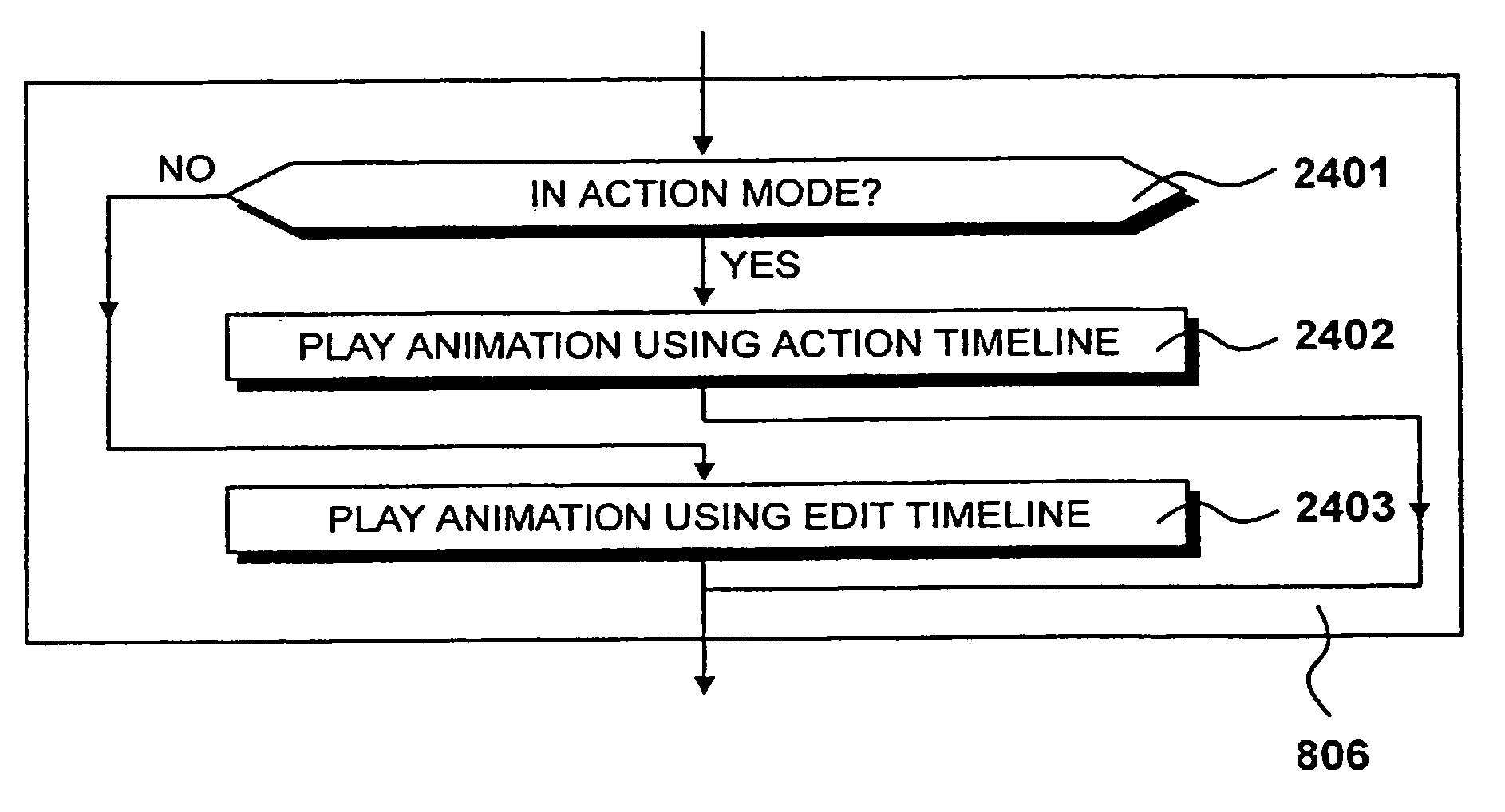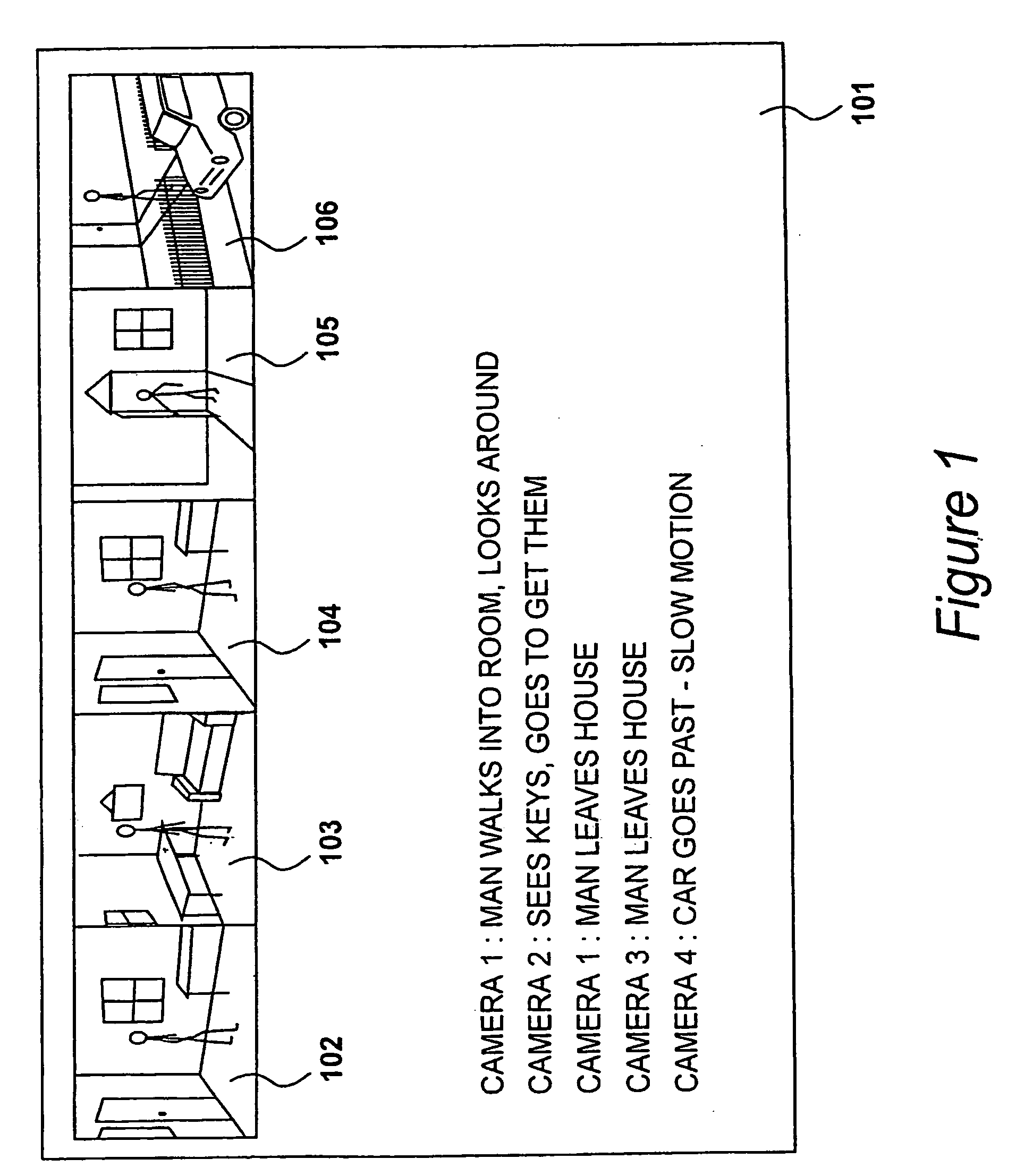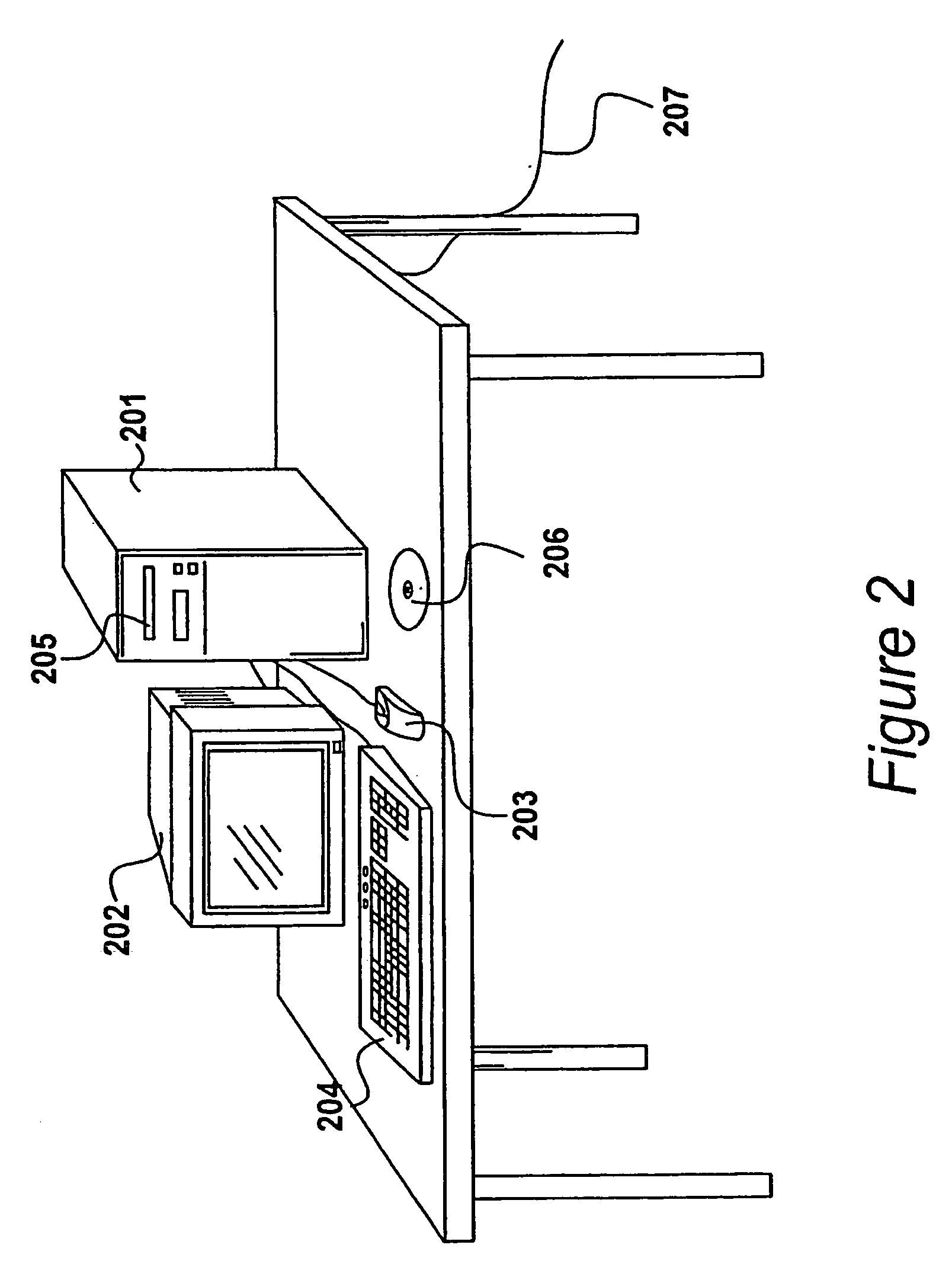Processing three-dimensional data
a three-dimensional data and processing technology, applied in the field of processing three-dimensional data, can solve the problems of difficult production of editing operations that would be easy to use film, and the animator's time-consuming, etc., and achieve the effect of simplifying the animation channel
- Summary
- Abstract
- Description
- Claims
- Application Information
AI Technical Summary
Benefits of technology
Problems solved by technology
Method used
Image
Examples
Embodiment Construction
FIG. 1
[0042] Typically, the first stage in producing an animation is a story board, sketching the outline of a scene.FIG. 1 illustrates an example of such a storyboard 101. As explained in the accompanying text, in picture 102 a man walks into view in a room of a house and looks around. In picture 103 he sees his keys on a table and walks over to get them, these being seen from a different camera. In picture 104 he is shown leaving his house from the inside, while in picture 105 his exit is shown from a camera outside the house. In picture 106 he watches a car go past, shown from yet another camera, and this portion of the scene is to be in slow motion.
[0043] In order to animate such a scene an animator creates three-dimensional (3D) data. 3D data is a set of data that defines a number of assets, such as sets, objects and characters, and associates animation curves with some or all of them. An animation curve is a function over time that defines positions in space for a bone or ver...
PUM
 Login to View More
Login to View More Abstract
Description
Claims
Application Information
 Login to View More
Login to View More - R&D
- Intellectual Property
- Life Sciences
- Materials
- Tech Scout
- Unparalleled Data Quality
- Higher Quality Content
- 60% Fewer Hallucinations
Browse by: Latest US Patents, China's latest patents, Technical Efficacy Thesaurus, Application Domain, Technology Topic, Popular Technical Reports.
© 2025 PatSnap. All rights reserved.Legal|Privacy policy|Modern Slavery Act Transparency Statement|Sitemap|About US| Contact US: help@patsnap.com



